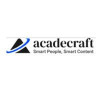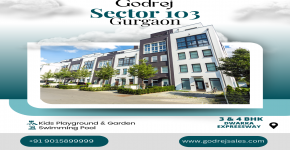 Launch apps instantly. Claim $200 credits on DigitalOcean
Launch apps instantly. Claim $200 credits on DigitalOcean
Exploring the Essentials of Indexing and Abstracting
Written by Jaya Acadecraft » Updated on: March 29th, 2024

Has it ever happened that the scales of information feel heavy upon you being available everywhere? It could be like finding a single 'needle' in a 'haystack' full of stuff. It sounds amazing, but there are also specifically designed methods to help. Indexing and abstracting help speed up accessing the relevant articles or papers efficiently.
Indexing and abstracting services arrange huge datasets from books, academic papers, websites, and more. They are no different from your mentors, who have gathered the resources that you need. Indexing and abstracting become tools to provide useful access to knowledge.
Are you curious to see how these critical services function? The next sections will further your knowledge of indexing and abstracting!
The Role Of Indexing
Indexing is the main component of any organized information system. This includes developing indices for documents that make it possible to find information easily. Think of it as designing a map that allows you to reach where the necessary information is stored without going through irrelevant data.
Indexing and abstracting services examples are that they ]cover library databases, online journals and digital archives. They index keywords, subjects, authors, and other relevant categories. This process also makes it a lot easier for users to search for data with a huge amount of data.
The Role Of Abstracting
Where indexing points out where the information is, abstracting is about what the information is about. An abstract is a brief version of a document's content and a guide that clearly explains its main points. This tool is important for researchers and readers who want to know if the document has the necessary information.
Abstracting summarizes the document's content and conveys it in a brief form. This applies especially to the academic and professional environments, where people do not have enough time and the information should be directly related to the task.
The Synergy Of Indexing And Abstracting
When indexing and abstracting are combined, they function as a strong instrument for information retrieval. Indexing aims to make search possible. Whereas abstracting promotes understanding of the content when searching happens. This sets them apart and is what makes the answers to these questions essential for academic and professional research.
Indexing and abstracting services examples include Academic journal databases where articles are indexed for easy searchability, and abstracts are provided to summarise the research.
Types Of Indexing And Abstracts
Various indexing and abstracting styles exist, catering to specific material disciplines.
Subject Indexing: A bibliography here categorizes the resources mainly applied to determine the subject of a certain topic. Subject indexing can be further divided into:
Broad Subject Indexing: Resources are grouped according to general universities or disciplines.
Specific Subject Indexing: Resources are indexed using subject descriptors with more specificity and involvement.
Author Indexing: This technique places resources according to the alphabetical order of the author's or creators' names. Author indexing often appears in the databases of literary works, research papers, and academic journals.
Title Indexing: This indexing method organizes information resources by their titles, as the name implies. Title indexing can be a proper remedy for searching for information related to books, articles, or documents.
Citation Indexing: This mechanism is significant even in the field of education and research. It comprises a library of resources organized by the citations or references they contain. Therefore, users can track the relationship between different works.
Keyword Indexing: This technique indexes documents according to their content's keywords or meaningful words. Keyword indexing can be done using automatic tools or manually. Moreover, this indexing allows people to search for particular subjects or ideas.
Indicative Abstracts: These guidelines present a general view of the work's central thoughts or main points. They are an indicator by which users can tell the appropriateness of a resource without reading the main text.
Informative Abstracts: In contrast with general and intuitive abstracts, informal abstracts are a broad version of the entire work. They contain the main findings, the methodologies, and the overall conclusions.
Critical Abstracts: Furthermore, extensive abstracts recap the content and involve an appraisal or critique of the work. They might comprise an assessment of the resource’s strengths, and possible negative impacts.
Structured Abstracts: Such abstracts follow a specific format and usually have four parts:
objective,
methods,
results,
conclusion.
Researchers often use structured abstracts, the standard format for scientific and medical publications.
The Impact Of Technology On Indexing And Abstracting
Technology has changed the world of indexing and abstracting services. Digital indexing and abstracting have made it possible to process large amounts of information easily. They provide real-time access to the needed data. This technology has increased these services' accuracy and availability to a global audience.
Conclusion
Nowadays, indexing and abstracting services are becoming increasingly important as they ensure that all information is reachable and manageable. These services act as a guide and facilitator by organizing and highlighting vast data sets. Researchers, scholars, and professionals can easily reference and check the right data. The role of these services has become increasingly significant as the amount of available information increases. Also, they are crucial in the process of knowledge and research.
Key Takeaways
Indexing and abstracting services build the backbone of effective information management and navigation.
Indexing allows users to access the exact information they need by building a visual map of its location.
Abstracting is a concise summary of the document's content, allowing readers to check its relevance quickly.
The combination is perfect for researchers and information seekers nowadays.
Technological development has made these services highly efficient and more accessible.
To know more please visit us:https://www.acadecraft.com/contact-us/
Copyright © 2024 IndiBlogHub.com Hosted on Digital Ocean









Post a Comment
To leave a comment, please Login or Register